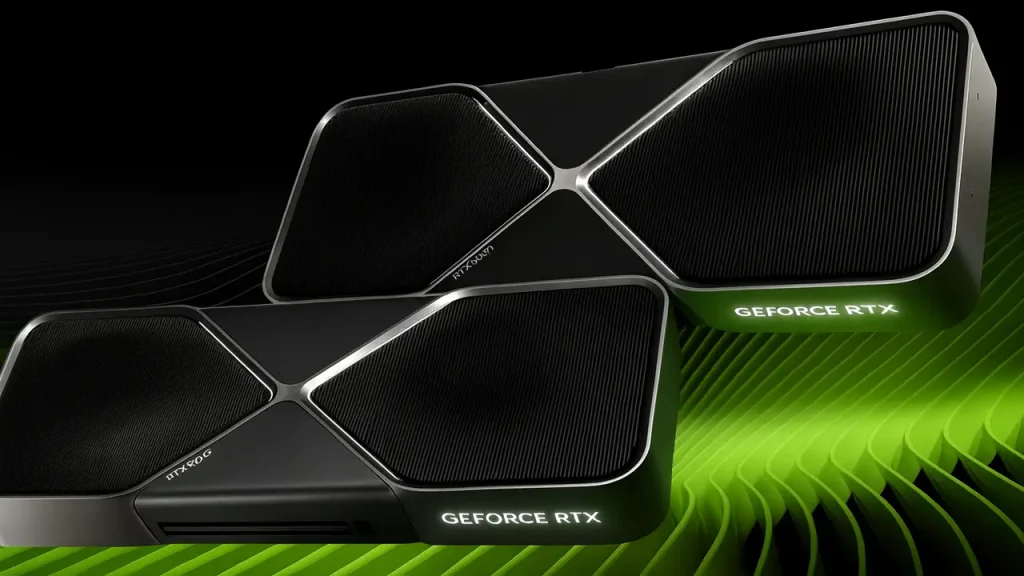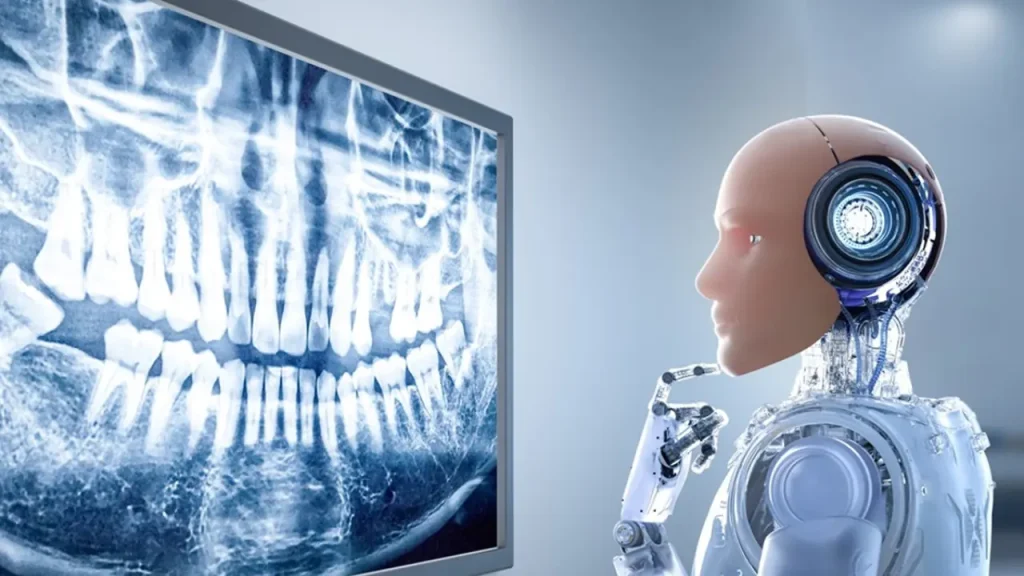Imagine flipping the power switch on your custom PC, expecting the familiar hum of fans and vibrant screen glow—only to be met with pitch-black silence. For many RTX 5090 and 5090D owners, this nightmare has become reality. But before you panic, it’s crucial to understand whether your GPU is truly “bricked.”

Signs of a Bricked GPU
The most common red flag is a blank or black screen right after powering up. Some users report their system failing to even reach the BIOS logo. You may also find your GPU has vanished entirely from their system’s device list, no detection in Windows, no lights, no fan spin.
In more severe cases, users have noticed a burning smell or melting 12V-2×6 power connectors, especially after extended high-load gaming sessions. One Reddit user described it like this:
“The screen went dark, then I smelled plastic burning. The connector literally fused into the socket.”
If you’re seeing these symptoms, it’s time to proceed carefully.
Why “Bricked” Might Not Mean Permanent Damage
Here’s some good news: in many cases, what looks like a “bricked” RTX 5090 isn’t a death sentence. The term “bricked” traditionally means your device is beyond recovery but many reports suggest these issues often stem from PCIe Gen5 instability or driver conflicts.
Think of it like your GPU getting stuck in a communication breakdown with your motherboard. You are not fried, just unable to “speak” properly until you tweak the settings or reinstall drivers.
Many users successfully restored their cards by switching PCIe slots from Gen5 to Gen4, or performing a clean driver rollback. This makes a strong case for troubleshooting before considering costly replacements.
Early Symptoms Users Reported (Real-World Cases)
In the early wave of reports, users described eerily similar experiences:
- Sudden system shutdowns during gaming or driver installation.
- Motherboard error codes (e.g., “Q-Code 4D” or “VGA LED stuck on”).
- Persistent black screens even after full system reboots.
“Thought my 5090D was dead, but after downgrading my PCIe settings, it booted like normal again. Scary stuff.”
One forum user from TechPowerUp shared
Why Are RTX 5090 GPUs Failing? Unpacking the Widespread Issues
If you’ve just unboxed your RTX 5090 and are already facing crashes or black screens, it’s not first time in. Across forums and social media, users are scrambling to understand why these cutting-edge GPUs are suddenly failing. Let’s examine the core issues that put these high-end cards at risk.
Sudden Failures After Driver Updates or PCIe Changes
One of the biggest culprits behind RTX 5090 failures? Driver instability, especially with the latest releases optimized for PCIe Gen5 systems. Many users report that their GPUs fail immediately after installing new drivers or enabling PCIe Gen5 in the BIOS.
It’s like plugging a jet engine into a fragile circuit board; these new drivers push the GPU to communicate at lightning-fast speeds, but if your motherboard or BIOS isn’t fully compatible, it can cause system crashes, display loss, and even BIOS boot failures.
“Installed the new driver, rebooted…black screen forever. Had to clear CMOS twice before it even POSTed.”
Reddit user @GPU_Nightmare shared
This instability tends to appear on newer motherboards with Gen5 support, but not all systems handle the transition smoothly.
Power Connector Risks: 12V-2×6 Overheating & Melting
Beyond software, a major hardware issue is also plaguing some RTX 5090 owners: the 12V-2×6 power connector. These connectors can overheat and even melt under extreme loads, particularly when seated improperly or strained by tight cable bends.
It can cause permanent GPU damage, not just from heat, but from short circuits or burnt PCB traces.
Difference Between RTX 5090 and RTX 5090D Models
“Is the RTX 5090D different from the regular RTX 5090?” In my opinion yes, but not in ways that impact these failures directly.
The RTX 5090D is a regional variant, primarily sold in China, designed to comply with specific export restrictions. While it shares core specs with the standard RTX 5090, some BIOS and power delivery tweaks make it slightly different under the hood.
Interestingly, the same driver and PCIe-related issues appear on both models, suggesting the core problem lies with platform compatibility and not just regional hardware differences.
Root Causes Explained: PCIe Gen5 Instability, Drivers, and BIOS Conflicts
When it comes to RTX 5090 bricked issues, it’s rarely just “bad luck.” The root causes usually boil down to a risky blend of cutting-edge technologies pushing systems beyond their limits. Below, we’ll decode exactly what’s going wrong under the hood—so you can fix or avoid it.
How PCIe Gen5 Can Trigger GPU Instability
PCIe Gen5 sounds like a performance dream: faster bandwidth, lightning-speed communication between your GPU and motherboard. But in practice, it’s causing headaches for RTX 5090 users.
Here’s why: Gen5 operates at such high speeds that even slight imperfections in motherboard traces, power delivery, or BIOS tuning can cause data errors.
Many RTX 5090 owners noticed their systems became unstable or completely unbootable after enabling PCIe Gen5. Downgrading PCIe to Gen4 in the BIOS often restores stability with virtually no performance loss.
Nvidia Drivers & BIOS Mismatches: A Dangerous Combo
Even if your PCIe settings are stable, Nvidia’s drivers can still cause trouble, especially when paired with outdated BIOS versions. Multiple reports link specific driver versions (notably early 572.xx releases) to black screens and unresponsive GPUs.
Here’s what happens:
When drivers attempt to unlock advanced features like PCIe Resizable BAR or new power states, they sometimes clash with older motherboard firmware. This can lead to a system lockup during driver installation or boot.
It’s like trying to run the latest software on an outdated operating system, it simply won’t compute.
Many users fixed their systems by:
- Flashing the latest motherboard BIOS.
- Avoiding beta or “Game Ready” drivers, opting instead for Studio Drivers for stability.
- Rolling back to pre-572 driver versions using tools like DDU (Display Driver Uninstaller).
Hidden Power Connector Risks with RTX 5090 GPUs
While driver and PCIe issues are often reversible, power connector problems can cause permanent hardware damage.
The RTX 5090 uses a high-wattage 12V-2×6 power connector that’s notoriously sensitive. If not seated perfectly, or bent too tightly during cable routing. It can lead to:
- Overheating
- Partial melting
- Voltage spikes damaging GPU components
To prevent this:
- Always double-check that the power cable is fully inserted until it clicks.
- Avoid sharp cable bends near the connector.
- Monitor temperatures under load, especially after transport or reseating the GPU.
How Users Fixed Bricked RTX 5090s
When a $2,000 GPU suddenly stops working, it’s hard not to panic. But the good thing is that many RTX 5090 owners have clawed their way back from the brink. Their recovery stories can help you avoid costly mistakes:
The PCIe Gen4 Downgrade Solution
This fix is surprisingly simple—and wildly effective.
Many users discovered that forcing their motherboard’s PCIe slot to run at Gen4 speeds instead of Gen5 instantly solved black screen and boot loop issues. Why? Because PCIe Gen5 can overwhelm system stability, especially on first-gen Gen5 motherboards.
“After two weeks of debugging, changing PCIe from Auto to Gen4 fixed it in seconds. Everything runs smooth now, zero crashes.”
One Reddit user shared
How to do it:
- Enter your BIOS (usually by pressing Delete or F2 at startup).
- Navigate to PCIe Settings.
- Set the primary GPU slot to Gen4 manually.
- Save and reboot.
Performance loss? Minimal. Most users report only a 1-2% performance difference, with full stability restored.
Driver Rollback & DDU Clean Install Success Stories
For others, the issue wasn’t hardware, but software gone rogue.
Many RTX 5090 owners hit trouble after updating to the latest Nvidia Game Ready drivers. The fix? A clean rollback to a more stable driver version, usually Studio Drivers or drivers prior to 572.xx.
“Used DDU in safe mode, wiped every trace of the bad driver, and installed Studio 571.88. GPU came back to life—no more black screens.”
Redditor “RenderFix” described
Steps Users Followed:
- Download DDU (Display Driver Uninstaller) from the official site.
- Reboot into Safe Mode.
- Run DDU and select “Clean and restart.”
- Install a stable driver manually (Studio or pre-572 Game Ready).
Pro Tip: Avoid installing drivers through GeForce Experience during this process to prevent auto-install conflicts.
Power Connector Fixes & Cable Safety Tips
Some users faced physical damage, specifically, partially melted 12V-2×6 connectors. While this often requires an RMA, there are preventive and recovery steps worth trying:
Common Fix Approach:
- Replace damaged cables with verified high-quality replacements from trusted PSU manufacturers.
- Use cable extensions rated for 600W+ loads.
- Carefully reseat connectors until you hear a solid click, loose connectors are the #1 cause of melting.
RTX 5090 Repair Options Compared: DIY Fix or RMA?
When your RTX 5090 or 5090D suddenly fails, you’re faced with a tough decision: Should you attempt a DIY fix or go straight to an RMA (Return Merchandise Authorization)?
Here’s a side-by-side breakdown to help you weigh your options clearly.
Side-by-Side Comparison of Fix Options
| Repair Option | Success Rate | Difficulty | Warranty Impact | Typical Cost | Best For |
| PCIe Gen4 Downgrade (BIOS Tweak) | High (80-90%) | Easy | None | Free | Quick, safe stability fix |
| Driver Rollback + DDU Clean Install | High (75-85%) | Moderate | None | Free | Software-induced crashes |
| Power Connector Reseat / Replace | Moderate (50-60%) | Moderate | Depends (DIY cable mods may void warranty) | $20–$50 (for premium cables/adapters) | Minor connector overheating |
| Full GPU RMA / Warranty Claim | Guaranteed (if approved) | N/A (Handled by manufacturer) | None (unless physical damage is user-caused) | Shipping costs, time loss | Irreparable damage, melted connectors |
This table highlights a key takeaway: Software and BIOS fixes work in most cases and don’t affect your warranty, making them the safest first step.
Warranty Considerations & Risks
While software-level fixes like PCIe downgrades and driver rollbacks won’t void your warranty, hardware interventions are trickier.
For example:
- Reseating or replacing power cables is generally safe—but using third-party adapters or modified cables might void your warranty under some policies.
- If Nvidia or your GPU vendor detects melted connectors or user-modified cables, they may reject your RMA.
Always check your warranty terms before attempting physical fixes. Some brands, like MSI and ASUS, provide clearer policies on power connector issues than others.
When to Stop DIY & Opt for RMA
Here’s the hard truth: not every RTX 5090 problem can be solved at home.
Stop DIY efforts and request an RMA if:
- The GPU isn’t detected even after PCIe Gen4 downgrade and driver rollback.
- You notice physical damage—burn marks, melted connectors, or PCB cracks.
- The card consistently fails to power on or crashes under minimal load.
In these cases, pushing further with DIY repairs could worsen the damage or complicate warranty claims.
Step-by-Step Fix: Recovering a Bricked RTX 5090 (Beginner-Friendly)
If your RTX 5090 or 5090D isn’t booting, don’t panic just yet. Many users have restored their GPUs with simple steps—no advanced tools or costly repairs needed.
Here’s a straightforward, step-by-step guide anyone can follow. These fixes are widely recommended by users on Reddit and TechPowerUp, and they don’t void your warranty if done correctly.
PCIe Gen4 BIOS Setting Change Guide (With Screenshots)
Many RTX 5090 issues stem from unstable PCIe Gen5 links. Switching to PCIe Gen4 can stabilize your GPU instantly.
Steps:
- Enter BIOS/UEFI: Restart your PC and press Delete or F2 during boot-up.
- Navigate to Advanced Settings → PCIe Settings.
- Locate the setting for your primary GPU slot, often labeled PCIe Link Speed or PCIe Mode.
- Change it from Auto or Gen5 to Gen4.
- Save changes and exit BIOS (usually F10 key).
Pro Tip: Some BIOS setups use slightly different names like PCIe Clocking or PCIe Negotiation Mode. Refer to your motherboard manual for exact terms.
Visual Aid: Include screenshots showing BIOS navigation paths for major motherboard brands like ASUS, MSI, and Gigabyte.
Safe Driver Rollback Using Display Driver Uninstaller (DDU)
Sometimes, your RTX 5090 isn’t the hardware issue—it’s the driver.
Here’s how to safely roll back using DDU:
- Download Display Driver Uninstaller (DDU) from its official site.
- Boot your PC into Safe Mode (hold Shift while clicking Restart → Advanced Options → Startup Settings).
- Run DDU and select Clean and restart for GPU drivers.
- Once rebooted, install a stable Nvidia driver manually—preferably a Studio Driver or a pre-572.xx release.
Important: Avoid using GeForce Experience for this reinstall—it may automatically update to unstable drivers.
Many users, including Redditor RenderFix, reported immediate success with this method:
“Safe Mode + DDU + Studio Drivers = instant fix. Haven’t had a crash since.”
Power Connector Check & Replacement Steps
Physical issues like melted or loose power connectors need extra caution.
Here’s how to safely check and reseat your connector:
- Power off and unplug your PC completely.
- Inspect the 12V-2×6 connector for burn marks, melted plastic, or bent pins.
- If the connector looks clean, firmly reseat it until you hear a clear click.
- Route cables with gentle curves—avoid tight bends near the connector.
- If damage is visible, stop immediately and consider an RMA or professional repair.
Pro Tip: Consider using angled adapters or premium cables from trusted brands like CableMod for safer cable management.
How to Prevent RTX 5090 Bricking: Pro Tips for Safe GPU Use
Once your RTX 5090 is running smoothly again, it’s smart to take steps that reduce the risk of future problems. Prevention here isn’t just about protecting your GPU; it’s about protecting your time, money, and sanity.
Here are proven, user-backed tips to keep your RTX 5090 (and your nerves) safe.
Driver Installation Best Practices
Bad drivers are one of the leading causes of crashes and black screens on RTX 5090 GPUs. Here’s how to minimize that risk:
- Stick with Stable Drivers: Avoid beta or “Game Ready” drivers unless necessary. Opt for Studio Drivers for stability, especially for non-gamers.
- Clean Install Always: Before installing a new driver, use Display Driver Uninstaller (DDU) to fully remove previous ones.
- Disable Auto-Updates: Turn off automatic driver updates via GeForce Experience or Windows Update during troubleshooting periods.
Safe PCIe Settings for Stability
With PCIe Gen5 still in its infancy, stability often improves by stepping back:
- Force PCIe Gen4: Manually lock your PCIe slot to Gen4 in the BIOS for optimal balance between performance and reliability.
- Update Your BIOS Regularly: Many motherboard makers are still fine-tuning Gen5 compatibility; always use the latest firmware.
- Avoid Auto Mode on New Systems: Auto-detect settings can cause unexpected instability on some boards.
Power Connector Safety: Insertion, Adapters & Monitoring
Perhaps the most overlooked but critical preventive measure involves your GPU’s power connection:
- Double-Check Every Connection: Ensure the 12V-2×6 connector clicks firmly into place.
- Avoid Excessive Bending: Sharp bends near the connector can cause internal stress and overheating.
- Use Quality Adapters: Cheap or unverified adapters can create serious risks. Trusted brands like CableMod offer safer alternatives.
- Monitor Temperatures: Keep an eye on GPU and connector temps, especially during long gaming or rendering sessions.
Final Thoughts:
The RTX 5090 and 5090D are undeniably powerful, but as this guide shows, they come with their share of high-stakes risks. From PCIe Gen5 instability to tricky driver conflicts and power connector hazards, these issues aren’t just tech quirks. They can impact your wallet and your workflow.
The good news is that most problems are fixable. Whether it’s a quick BIOS tweak, a driver cleanup, or simply being extra cautious with your power connectors, there are proven ways to recover and safeguard your GPU.
















